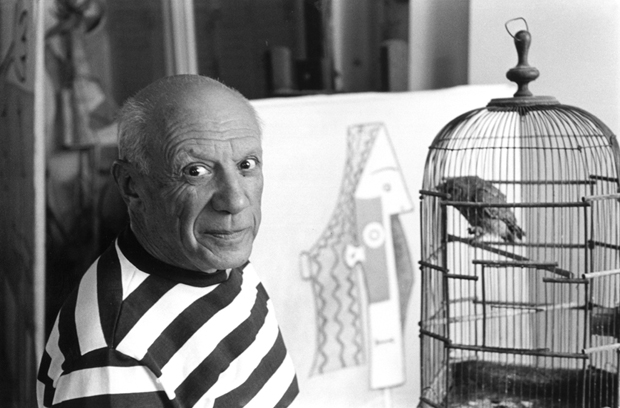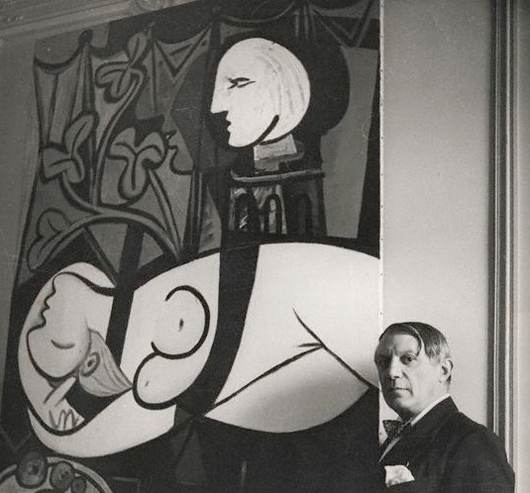
The Picasso, the Thief, His Wife & Her Cousin
Could so-called friends of Picasso have conspired against him? The prosecution in a new case alleges so
On 9 September 2010 an elderly electrician called on Claude Picasso at his office on rue Volney in the second arrondissement of Paris. The caller, Pierre Le Guennec, claimed to be a friend of Claude’s father, Pablo Picasso, and had worked at the great artist’s villa near Cannes in southern France.
In return for fitting, among other items, an alarm system, M. Le Guennec said that Picasso had given him a collection of works. The electrician had only lately realised this gift’s worth, and hoped Claude, who oversees his father’s estate, would authenticate the trove, enabling Le Guennec to sell it on the open market.
Had M. Le Guennec’s collection been little more than a few napkin sketches, Claude’s suspicions might not have been aroused. Instead, the retired electrician revealed an incredible collection of early works, consisting of 180 paintings, drawings, prints and collages as well as 91 sketches spread across two books.
What’s more, the works were high quality, and appeared to date from one of the most important periods in Picasso’s career: 1900, when he arrived in Paris, until 1932, when he received his first retrospective.

How could the artist, who was renowned for filling Parisian bank vaults with his own paintings, and who returned to his early pieces again and again, have simply handed over such a collection to a man who, according to Pablo’s descendants, although a familiar face in the Picasso household towards the end of the artist’s life, was no great friend?
Claude and co called on the authorities, and the works were seized. Yet there was little evidence to disprove Le Guennec’s story. Claude might not authenticate the works, yet prosecutors could not bring a case against the electrician.
However, as the French newspaper Libération reports this week, the story behind M. Le Guennec’s Picassos did not end there. Following news of this unlikely find, a genealogist from Bordeaux in south-west France contacted Claude’s lawyer. The geologist had been tasked with finding heirs to the considerable Picasso collection belonging to a mysterious, recently deceased woman, described only as ‘Madame B’. Among the possible candidates to inherit Madame B’s heirlooms was a certain M. Le Guennec.
After some investigation, it was revealed that that Madame B was Jacqueline Bresnu, the late wife of Picasso’s former Chauffer, Maurice Bresnu, known affectionately by the artist as ‘nounours’ or ‘teddy bear’. Bresnu, who died in 1991, was familiar to Picasso scholars, having sold on a number of minor works supposedly gifted to him by the artist over the years. However, the provenance of Bresnu’s Picassos looked shakier, after Jacqueline Bresnu (née Le Guennec) was also revealed to be Pierre Le Guennec's cousin. Still with us? Good. It gets easier from here.
Now, both Madame B’s and M. Le Guennec’s collections have been sequestered, while Le Guennec and his wife have been remanded to appear in a French criminal court next February to face charges of receiving stolen goods.
The prosecution alleges that, rather than take the works themselves, Pierre and his wife received pieces stolen by Maurice Bresnu, in a decades-long deception. M. Bresnu died in 1991, while his wife passed away in 2009. Given the statute of limitations on cases of this kind, prosecutors argue that Le Guennec had held onto the works until his cousin’s death, in the hope that he might finally profit from the ‘teddy bear’s hard work.
Whoever wins next spring, let’s hope all the art ends up on public display sometime soon. For a more straightforward take on amassing a great art collection, buy our book, Collecting Art for Love, Money and More; for more on Picasso consider these wonderful titles; you can also invest in a limited-edition black and white print of Picasso taken by the late, great René Burri; and come back soon to find out about our brilliant, forthcoming art crime book, The Art of Forgery.